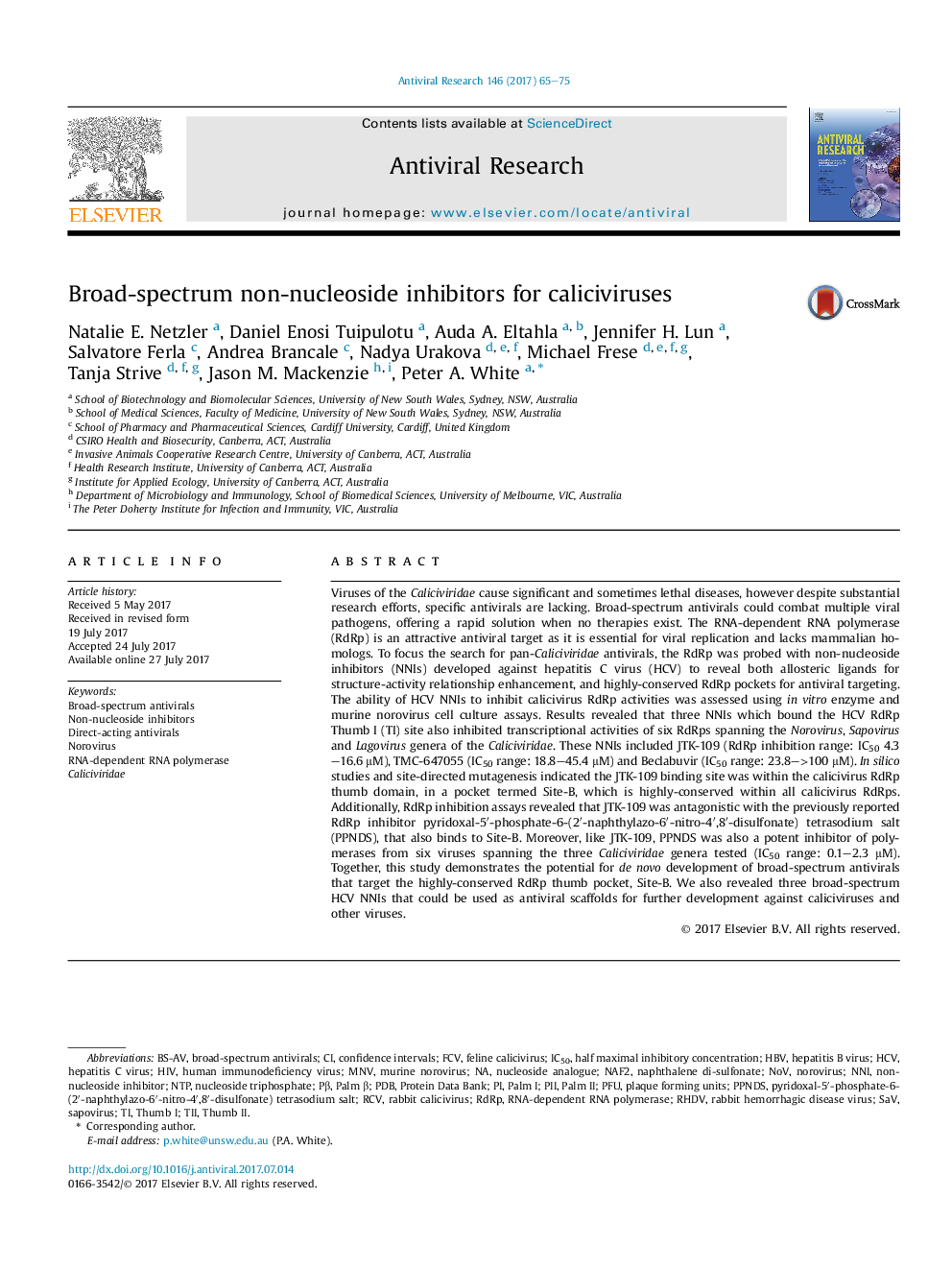| کد مقاله | کد نشریه | سال انتشار | مقاله انگلیسی | نسخه تمام متن |
|---|---|---|---|---|
| 5551674 | 1557797 | 2017 | 11 صفحه PDF | دانلود رایگان |
- The Caliciviridae comprise several highly diverse human and non-human pathogens.
- Broad-spectrum antivirals could offer a significant advantage to rapidly combat multiple viral infections.
- A family of allosteric antivirals developed against hepatitis C virus also inhibited calicivirus replication.
- These antivirals are scaffolds for medicinal enhancement to improve potency, specificity and cytotoxicity profiles.
- The calicivirus polymerase binding site reveals a highly-conserved target for broad-spectrum antiviral development.
Viruses of the Caliciviridae cause significant and sometimes lethal diseases, however despite substantial research efforts, specific antivirals are lacking. Broad-spectrum antivirals could combat multiple viral pathogens, offering a rapid solution when no therapies exist. The RNA-dependent RNA polymerase (RdRp) is an attractive antiviral target as it is essential for viral replication and lacks mammalian homologs. To focus the search for pan-Caliciviridae antivirals, the RdRp was probed with non-nucleoside inhibitors (NNIs) developed against hepatitis C virus (HCV) to reveal both allosteric ligands for structure-activity relationship enhancement, and highly-conserved RdRp pockets for antiviral targeting. The ability of HCV NNIs to inhibit calicivirus RdRp activities was assessed using in vitro enzyme and murine norovirus cell culture assays. Results revealed that three NNIs which bound the HCV RdRp Thumb I (TI) site also inhibited transcriptional activities of six RdRps spanning the Norovirus, Sapovirus and Lagovirus genera of the Caliciviridae. These NNIs included JTK-109 (RdRp inhibition range: IC50 4.3-16.6 μM), TMC-647055 (IC50 range: 18.8-45.4 μM) and Beclabuvir (IC50 range: 23.8->100 μM). In silico studies and site-directed mutagenesis indicated the JTK-109 binding site was within the calicivirus RdRp thumb domain, in a pocket termed Site-B, which is highly-conserved within all calicivirus RdRps. Additionally, RdRp inhibition assays revealed that JTK-109 was antagonistic with the previously reported RdRp inhibitor pyridoxal-5â²-phosphate-6-(2â²-naphthylazo-6â²-nitro-4â²,8â²-disulfonate) tetrasodium salt (PPNDS), that also binds to Site-B. Moreover, like JTK-109, PPNDS was also a potent inhibitor of polymerases from six viruses spanning the three Caliciviridae genera tested (IC50 range: 0.1-2.3 μM). Together, this study demonstrates the potential for de novo development of broad-spectrum antivirals that target the highly-conserved RdRp thumb pocket, Site-B. We also revealed three broad-spectrum HCV NNIs that could be used as antiviral scaffolds for further development against caliciviruses and other viruses.
Journal: Antiviral Research - Volume 146, October 2017, Pages 65-75
